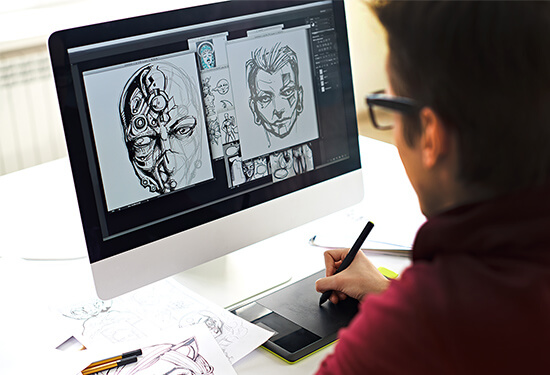
Here are some details typically included in an animation course:
1. Course Overview
- Introduction to Animation: Understanding the basics and history of animation, its evolution, and its impact on media.
- Types of Animation: Exploring different styles such as traditional (2D), computer-generated (3D), stop-motion, and motion graphics.
2. Core Subjects
- Fundamentals of Animation: Principles of animation (squash and stretch, timing, anticipation, etc.), storytelling, and character development.
- Drawing and Design: Life drawing, character design, background and environment design, color theory, and composition.
- Digital Tools: Software proficiency (Adobe Animate, Toon Boom Harmony, Autodesk Maya, Blender, etc.).
- 3D Animation: Basics of 3D modeling, rigging, texturing, lighting, and rendering.
- 2D Animation: Techniques for hand-drawn animation, vector-based animation, and digital puppetry.
3. Specialized Areas
- Motion Graphics: Creating dynamic visuals for media, including typography and graphical elements.
- Visual Effects (VFX): Techniques for integrating live-action footage with computer-generated imagery.
- Game Animation: Animation specific to game development, focusing on interactive and real-time animations.
- Character Rigging: Techniques for creating skeletal structures for characters to enable movement.
4. Practical Applications
- Projects and Portfolios: Developing a portfolio through various projects, including short films, commercials, and interactive media.
- Collaborative Work: Working in teams to simulate a professional studio environment.
5. Technical Skills
- Software Mastery: In-depth learning of industry-standard software tools.
- Scripting and Automation: Basics of programming for animation (e.g., Python for Maya, expressions in After Effects).
6. Professional Development
- Industry Insights: Guest lectures, workshops, and seminars with industry professionals.
- Career Preparation: Resume building, interview skills, and networking opportunities.
- Internships and Placements: Opportunities for real-world experience through internships with animation studios.
7. Course Duration and Structure
- Duration: Varies from short courses (a few weeks to months) to full degree programs (2-4 years).
- Structure: Combination of lectures, hands-on workshops, projects, and assessments.
8. Learning Outcomes
- Creative Skills: Ability to conceptualize and create original animations.
- Technical Proficiency: Mastery of animation software and techniques.
- Portfolio Development: A comprehensive portfolio showcasing a range of animation styles and techniques.
- Industry Readiness: Preparedness for various roles in the animation industry, such as animator, character designer, storyboard artist, etc.
9. Prerequisites
- Educational Background: High school diploma or equivalent; some advanced courses may require a bachelor's degree or portfolio.
- Technical Skills: Basic computer skills; familiarity with graphic design or previous experience in related fields can be beneficial.
10. Certification and Accreditation
- Certification: Upon completion, students receive a certificate or diploma in animation.
- Accreditation: Ensure the course is accredited by a recognized body for quality assurance.
Popular Institutes Offering Animation Courses
- CalArts (California Institute of the Arts)
- Savannah College of Art and Design (SCAD)
- Ringling College of Art and Design
- Gobelins, l'école de l'image
- Sheridan College
These details can vary based on the specific course and institution. It's always a good idea to research and compare programs to find the one that best fits your needs and career goals.
